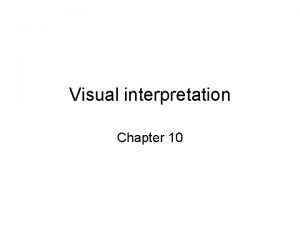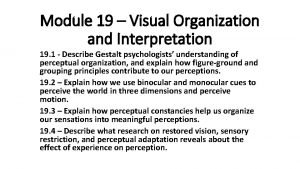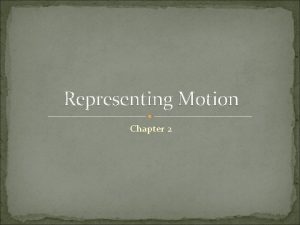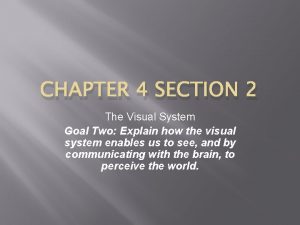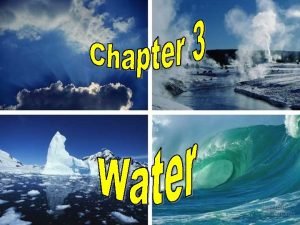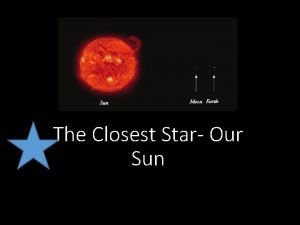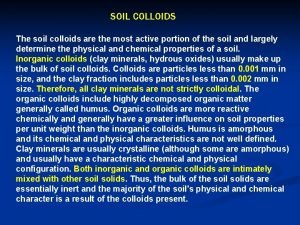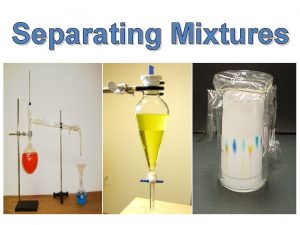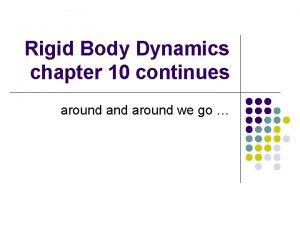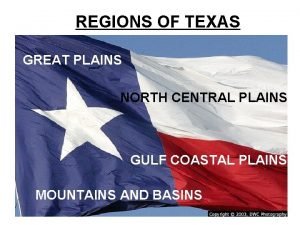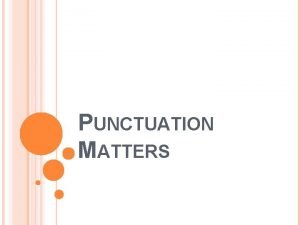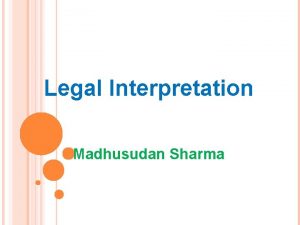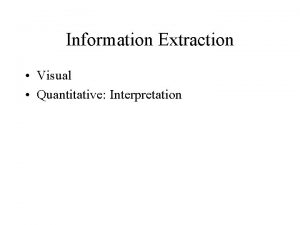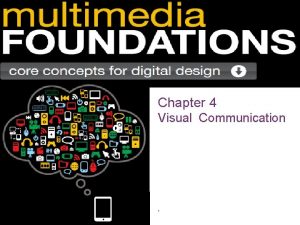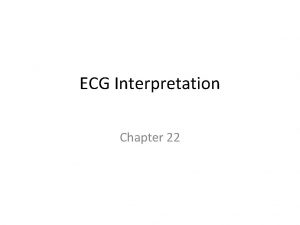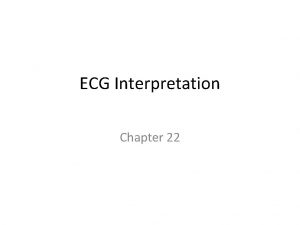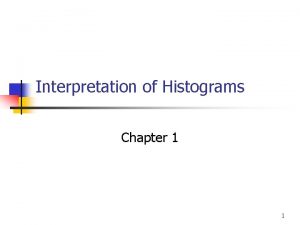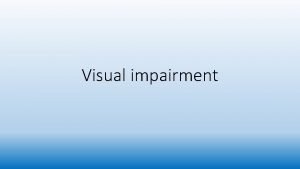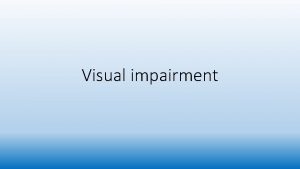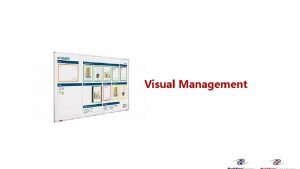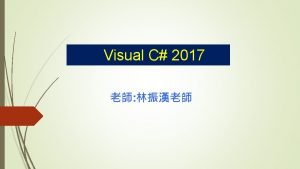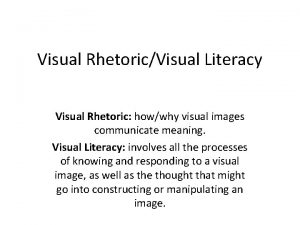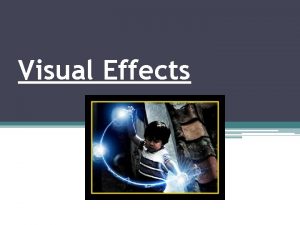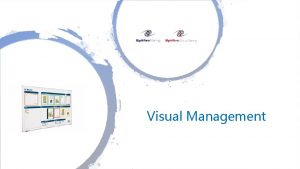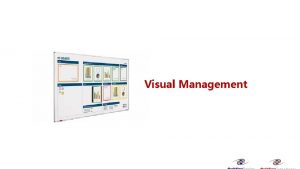Visual interpretation Chapter 10 Visual interpretation in important

























































































- Slides: 89

Visual interpretation Chapter 10

• Visual interpretation in important to GIS development and application. • It is the interpretation of aerial photography by a photo interpreter. – Regarded as somewhat useful but oldfashioned likely to be replaced by digital analyses

• Visual interpretation is now seen in the new context. – Skills that a photo interpreter uses are applied equally to photographs as well as digital images – So a new name has come into use that of image analyst or image interpreter

• In addition, remote sensing data has become more detailed, much like photography • Finally, computer science is not evolved to the point where image analysis can be done completely automatically

Characteristics of aerial imagery • Visual interpretation is used to extract information from fine resolution imagery at scales of 1: 40, 000 or larger – And includes almost all aerial photography and fine scale satellite imagery (e. g. IKONOS) – Excludes coarse resolution imagery produced by satellites such as Landsat

Characteristics of aerial imagery • GIS requires the following conditions be met – Geometric errors removed – Detailed spatial information is contained – Can provide taxonomic details such as separation of corn from wheat – Spatial relationships can be examined such as vegetation distribution and water bodies – Patterns of change from one day to the next are monitored – Equipment and experienced staff are available – Historical phenomena can be examined such as landuse change

Sources of imagery • Two common sources – Archival imagery previously acquired for another purpose. – Imagery acquired specifically for the project at hand

Archival imagery • Several sources are available. – USGS – US National Archives and Records Administration – State agencies • Department of Transportation • Department of natural resources. • Such imagery must often be bought

Archival imagery • In most cases, computerized databases permit online searches. • Many states update photography on a regular basis. – These are useful in examining change

Custom acquisition • Imagery is acquired, according to the user specifications. – The date scale emulsion coverage and other characteristics are determined by the user. • The disadvantages include – high cost – requirement for planning well in advance. – effort devoted to preparing and monitoring the specifications – delays and cancellations due to weather or equipment malfunctions

Custom acquisition • Users should prepare a contract or statement of work – Specifies in detail the products and services required from the firm with respect to cost, deadlines, and products to be prepared • Contract is a means for controlling the completeness and quality of the imagery

Custom acquisition • The photo interpreter may participate in making decisions about scale, date, time of day, deadlines, choice of film, and coverage

Custom acquisition • Photo interpreter should ask: – Will imagery be adequate for the purpose of the project? – Is the film emulsion satisfactory for the task? – Is the season suitable? – Will planned time of day provide appropriate shadowing? – In stereophotography, what will the overlap be?

Elements of image interpretation • Image analysis requires explicit recognition of eight elements of image interpretation that form the framework and understanding of an image – – – – Shape Size Tone Texture Shadow Site Association pattern

Shape • The outline of a feature – Important to note that shape depends on perspective – Overhead perspective, introduces scale effect




Size • The first to the dimensions of a feature • Relative size determined by comparing the object with familiar nearby features • Absolute size refers to the use of the aerial image to derive measurements


Tone • Refers to the average brightness of an area or, in the case of color imagery, to the dominant color of the region – Depends on the nature of the surface in the ankles of observation and illumination. – Smooth surfaces behave like specular reflectors, they tend to reflect radiation in a single direction • These features may appear bright or dark – Rough surfaces behave this diffuse reflectors. • Scatter radiation in all directions. • A peer is medium gray tones


Texture • Refers to the variation in tone over a surface or the apparent roughness of the surface as seen in the photo • Created by micro shadows in small irregularities in the surface.



Shadow • Refers to large distinctive shadows that revealed the outline of a future as projected onto a flat surface. – Depends on the nature of the object, angle of illumination, perspective, and slope of the ground surface






Site • Refers to a futures position with respect to topography and drainage. – Some things occupy a distinctive topographic position because of their function • Sewage treatment facilities at the lowest feasible topographic position. • Power plants located adjacent to water for cooling





Association • Association refers to the distinctive spatial interrelationships between features – Schools often associated with athletic fields. – Large parking lots often associated with malls




Pattern • Refers to distinctive arrangement of features – Orchards have trees plant can rows – Mobile home parks have rectangular buildings arranged in rows










Image interpretation tasks • Classification - Assign objects to classes – Detection, recognition, identification. – Interpreter confidence is ranked as possible, probable • Enumeration - Count items • Measurement- mensuration – Uses image scale to derive measurements such as length with distance and volume • Delineation – demarcation of regions

Interpretation strategies • Field observation. – Required when the image and its relationship to ground conditions are imperfectly understood • Direct recognition. – Interpreter derives information directly from inspection of the image • Inference – Based on visible features can derive information about invisible features – Certain relationships and identify features

Interpretation strategies • Interpretive overlays. – Useful when relationships between visible patterns are used to reveal patterns not directly visible. – Soils may be revealed by relationships with vegetation patterns, slope, and drainage • Photomorphic regions – Identify regions of uniform appearance on an image. – Does not attempt to resolve individual landscape components. • Mostly used with small-scale imagery in which coarse resolutions tend to average separate components

Interpretation strategies • Image interpretation keys. – Keys are reference information designed to enable rapid identification of features. – Usually a collection of annotated images or stereograms and a description, which may include sketches or diagrams

Aerial mosaics and image maps • IMAP is characterized by the planimetrically accurate representation of your surface and uses symbols to represent select features • An aerial image is not really a map because Tilton relief displacement introduced your metric errors – Its features are represented without selection or symbolization

Aerial mosaics and image maps • A aerial images form the basis of useful map-like representation of the Earth’s surface such as mosaics and orthophotos • Aerial mosaics are produced by assembling adjacent aerial photographs to form a single image


Aerial mosaics and image maps • Uncontrolled mosaics performed by assembling adjacent photographs without strict concern for geometric integrity


Aerial mosaics and image maps • A controlled mosaic presents the detail of an aerial photograph in planimetrically correct position


Aerial mosaics and image maps • An aerial index is created by placing adjacent area photographs together in their approximate relative position without represent econometric relationships – These are to be used as a guide for identifying those photographs that represent an area that is needed without searching the entire collection


Aerial mosaics and image maps • Orthophotos are aerial photographs prepared using stereoscopic parallax and photogrammetric principles to remove the effects of relief displacement and tilt to provide a planimetrically correct aerial image


Aerial mosaics and image maps • And orthophoto quadrangle is an orthophoto that represents the same region as the USGS topographic quadrangle – These can be thought of as image maps • The digital orthophoto quadrangle (DOQ) is a digital version

Field observations and accuracy assessment • Field observations are necessary because aerial imagery is not infallible or a total source of information – The information is derived through interpretation

Field observations and accuracy assessment • Think of a map or GIS as a statement about conditions of a certain place – The more precise the statement, the more useful it is to the user • Delineate small parcels, specific labels, etc. – The less precise the statement, the less useful • The larger the parcels, more general labels, etc.

Field observations and accuracy assessment • For example, a broad area labeled as a forest – Versus • Smaller areas each individually labeled as oak, pine, and fir.

Field observations and accuracy assessment • Field data are first-hand observations collected on the ground – Often use copies of images or maps to annotate in the field • Field work can create delays, increased expense, and other difficulties – But it is essential for establishing the validity of the work

On-screen digitizing • Traditionally, photointerpreters used transparent (mylar) overlays to show outlines, mark features, and make annotations – These then had to be digitized, transferred and registered to a planimetrically correct base layer


Manual Digitizing Most common form of coordinate data input Requires a digitizing table – Ranging in size (25 x 25 cm to 150 x 200 cm) • Ideally the map should be flat and not torn or folded • Cost: hundreds (300) to thousands (5000)

On-screen digitizing • In digital imagery it requires taking a raster image and putting a drawing a vector layer on top of it. – This all can be saved as one file – Can then be transferred directly to a GIS • This is called heads-up digitizing

Heads-Up Digitizing II • Raster-scanned image on the computer screen • Operator follows lines on-screen in vector mode



Digitizing Errors • Undershoots • Dangles • Spurious Polygons

On-screen digitizing • Not inherently difficult • Requires consistency and attention to detail • Can be challenging – Edges can be difficult to identify – Shadows – Low image contrast

Accuracy Assessment • Procedures well established to evaluate the accuracy of interpretation – For maps with polygons of specific types, an overall map accuracy and individual class accuracies can be determined • Requires a set of reference data points that have known characteristics – Ideally should be random – That may miss some categories, so, often random selection combined with collecting across all classes and across the entire study area

Accuracy Assessment • Should keep field collected data for input separate from, field data used for accuracy assessment • Assessment is a table called the error matrix – Each reference point and its matching map label are compared





The kappa statistic • There are so many values in the error matrix that it becomes confusing to people. – Want a single number that encapsulates the significance of the error matrix. – This is the kappa (κ) statistic • Difference between the observed agreement reported by the diagonal and the agreement that might be due solely to chance

The kappa statistic • Kappa is estimated by k hat • Observed = accuracy reported in error matrix – Sum correct / total • Expected = correct classification due to chance

The kappa statistic • The statistic adjusts the percentage correct by subtracting the estimated contribution of chance agreement – A κ=0. 83 means that the classification is 83% better than would be expected from chance assignment of pixels to categories – Kappa ranges between +1 and -1

Interpretation Equipment • Paper prints or transparencies • Magnification • Flatbed scanners – Dpi – up to about 3500 • Light tables • Densitometers • Stereo imagery equipment
 From most important to least important in writing
From most important to least important in writing Inverted pyramid in news writing
Inverted pyramid in news writing Least important to most important
Least important to most important How does interpretation b differ from interpretation a
How does interpretation b differ from interpretation a Visual interpretation
Visual interpretation Visual organization and interpretation
Visual organization and interpretation Visual organization and interpretation
Visual organization and interpretation Chapter 7 summary the great gatsby
Chapter 7 summary the great gatsby Great gatsby chapter 3 quotes
Great gatsby chapter 3 quotes Contoh pemrograman konvensional
Contoh pemrograman konvensional Chapter 4 data analysis and findings
Chapter 4 data analysis and findings The visual and artistic aspects of presenting a product
The visual and artistic aspects of presenting a product Visual c# how to program chapter 5 problem 15e
Visual c# how to program chapter 5 problem 15e Frictional force formula
Frictional force formula Picturing motion physics
Picturing motion physics Visual c# how to program chapter 1 problem 8e
Visual c# how to program chapter 1 problem 8e The physical outline of a display
The physical outline of a display Chapter 18 visual merchandising and display
Chapter 18 visual merchandising and display Visual merchandising color wheel
Visual merchandising color wheel Why is the ascension important gcse
Why is the ascension important gcse Footwork in netball
Footwork in netball Items that distort or prevent communication
Items that distort or prevent communication Work immersion weekly diary
Work immersion weekly diary Why experience is important
Why experience is important Doctrine and covenants 130
Doctrine and covenants 130 Features of strategy
Features of strategy Why is water important to living things
Why is water important to living things Important of reading
Important of reading Physical differences in the workplace
Physical differences in the workplace Why careful selection is important
Why careful selection is important Why are rivers important
Why are rivers important What is taxonomy and why is it important?
What is taxonomy and why is it important? Why is self-awareness important
Why is self-awareness important Shat is passover
Shat is passover When is advent
When is advent Things we should do in ramadan
Things we should do in ramadan Why are wetlands important
Why are wetlands important Managerial judgement technique in hrm example
Managerial judgement technique in hrm example 0..* uml
0..* uml Why is tolerance important
Why is tolerance important Why is time management important
Why is time management important Important facts about the middle colonies
Important facts about the middle colonies The most important points on the salamanca statement
The most important points on the salamanca statement The renaissance began in italy
The renaissance began in italy Important dates in italy
Important dates in italy Importance of quality food
Importance of quality food Why is culture important
Why is culture important The importance of compliments
The importance of compliments 3 parts of health triangle
3 parts of health triangle Why is genetic diversity important
Why is genetic diversity important Economic important of birds
Economic important of birds Why is the sun important
Why is the sun important What important mission was performed by the hebrew midwives
What important mission was performed by the hebrew midwives Dating serves several important functions that include:
Dating serves several important functions that include: Why is keyboarding important
Why is keyboarding important The science of naming and classifying organisms
The science of naming and classifying organisms Nobody lives in this house question tag
Nobody lives in this house question tag Why symbols are important
Why symbols are important One of the toughest part of summarizing is
One of the toughest part of summarizing is 4 essential parts of a stock
4 essential parts of a stock Statistic
Statistic Universal conditional statement examples
Universal conditional statement examples What is soil colloids
What is soil colloids What is meant by resocialization
What is meant by resocialization Socializing the individual review worksheet
Socializing the individual review worksheet Why organic social media is important
Why organic social media is important Cultural identity
Cultural identity Short story outline
Short story outline 5 importance of separating mixtures
5 importance of separating mixtures Why is the greenhouse effect important
Why is the greenhouse effect important What happened in act 4 of romeo and juliet
What happened in act 4 of romeo and juliet Work done by torque
Work done by torque Margin of safety formula business
Margin of safety formula business Fermentieren bedeutung
Fermentieren bedeutung Key events of the renaissance
Key events of the renaissance Refusal skills examples
Refusal skills examples Central plains important cities
Central plains important cities Phoneme identity activities
Phoneme identity activities Important of fasting in islam
Important of fasting in islam Handmaid's tale key quotes analysis
Handmaid's tale key quotes analysis No job is so important that it cannot be performed safely
No job is so important that it cannot be performed safely Why punctuation matters
Why punctuation matters Why is feedback important
Why is feedback important Why is cellular respiration important
Why is cellular respiration important Julia lane coleridge
Julia lane coleridge Why poetry is important
Why poetry is important When placing an order it is important to
When placing an order it is important to Disadvantage of using a safe deposit box
Disadvantage of using a safe deposit box Pre-spanish period
Pre-spanish period Performance management activities
Performance management activities




